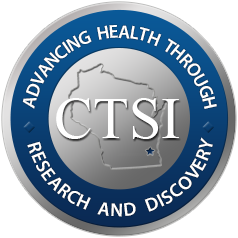Prehospital lactate improves accuracy of prehospital criteria for designating trauma activation level. J Trauma Acute Care Surg 2016 Sep;81(3):445-52
Date
04/27/2016Pubmed ID
27116410Pubmed Central ID
PMC5001911DOI
10.1097/TA.0000000000001085Scopus ID
2-s2.0-84973869320 (requires institutional sign-in at Scopus site) 40 CitationsAbstract
BACKGROUND: Trauma activation level is determined by prehospital criteria. The American College of Surgeons (ACS) recommends trauma activation criteria; however, their accuracy may be limited. Prehospital lactate has shown promise in predicting trauma center resource requirements. Our objective was to investigate the added value of incorporating prehospital lactate in an algorithm to designate trauma activation level.
METHODS: Air medical trauma patients undergoing prehospital lactate measurement were included. Algorithms using ACS activation criteria (ACS) and ACS activation criteria plus prehospital lactate (ACS+LAC) to designate trauma activation level were compared. Test characteristics and net reclassification improvement (NRI), which evaluates reclassification of patients among risk categories with additional predictive variables, were calculated. Algorithms were compared to predict trauma center need defined as more than 1 unit of blood in the emergency department; spinal cord injury; advanced airway; thoracotomy or pericardiocentesis; ICP monitoring; emergent operative or interventional radiology procedure; or death.
RESULTS: There were 6,347 patients included. Twenty-eight percent had trauma center need. The ACS+LAC algorithm upgraded 256 patients and downgraded 548 patients compared to the ACS algorithm. The ACS+LAC algorithm versus ACS algorithm had an NRI of 0.058 (95% confidence interval [CI], 0.044-0.071; p < 0.01), with an event NRI of -0.5% and nonevent NRI of 6.2%. When weighted to favor changes in undertriage, the ACS+LAC still had a favorable overall reclassification (weighted NRI, 0.041; 95% CI, 0.028-0.054; p = 0.01). The ACS+LAC algorithm increased positive predictive value, negative predictive value, and accuracy. Over-triage was reduced 7.2%, while undertriage only increased 0.7%. The area under the curve was significantly higher for the ACS+LAC algorithm (0.79 vs. 0.76; p < 0.01).
CONCLUSIONS: The ACS+LAC algorithm reclassified patients to more appropriate levels of trauma activation compared to the ACS algorithm. This overall benefit is achieved by significant reduction in overtriage relative to very small increase in undertriage. In the context of trauma team activation, this trade-off may be acceptable, especially in the current health care environment.
LEVEL OF EVIDENCE: Therapeutic/care management study, level III; prognostic/epidemiologic study, level III.
Author List
Brown JB, Lerner EB, Sperry JL, Billiar TR, Peitzman AB, Guyette FXMESH terms used to index this publication - Major topics in bold
AdultAir Ambulances
Algorithms
Biomarkers
Emergency Medical Services
Female
Health Services Needs and Demand
Humans
Lactic Acid
Male
Middle Aged
Pennsylvania
Predictive Value of Tests
Prognosis
Retrospective Studies
Trauma Centers
Triage
Wounds and Injuries









